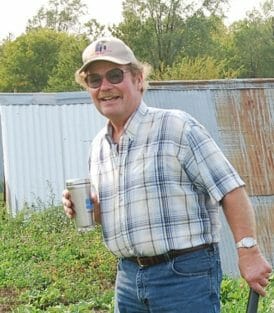Spring Observations by John Gilbert, part 2

John Gilbert
Previously I wrote about the importance of developing the mindset needed for the adjustments to cover cropping. Spring Observations, part 1.
And that’s where strategy becomes important. Strategy is part plan, part preparation for the unexpected, and part understanding the real world always includes hiccups (it’s too dry to germinate; too cold for herbicide to burn down; too wet, dry or windy). Just like much of life, cover crops are a mental process.
The why
It’s your strategy that lays out a progression through a rotation. OK, so we have heavy rye biomass going into beans; what’s the plan for this fall before corn? Is going back with rye a good idea, or might there be other workable options? (Would something that winter kills, like oats or annual ryegrass plus brassicas make more sense so corn planting isn’t delayed?) We’re saving on primary tillage with cover crops, but what’s that worth? How do we know how much fertility we’re capturing? Do we need to run a late spring nitrate test or Haney so we’ll know? We can’t put on a full N rate pre-plant and still tell much with those tests, so are we prepared to side dress? Remember, if this was easy, everyone would be doing it. It’s easier when we prepare a plan.
Part of strategy is knowing why we’re using cover crops. There aren’t bad reasons, but if we haven’t thought through the real reason, we can’t sell the needed changes to our families, creditors, landlords and neighbors. And just like there are many reasons, there are many approaches. This is where we need to think about tailoring our choices.
Horses for courses
Using a “horses for courses” approach helps us pick the best choice to meet our objectives. Winter grains (rye, wheat, triticale and some barley) are good choices before soybeans, and probably should be essential — best planted before harvest — where stalks are being removed (silage, bedding). Corn on corn rotations are more challenging, and might be a good place for brassicas and legumes like vetch. (The NLAE is experimenting with kura clover as a perennial cover, much as crown vetch was 30 years ago, in a process that often is termed “living mulches”.) In beans before corn, brassicas, legumes and winter killed grasses would be ideal, but still a work in progress.
If we’re post harvest in northern areas, our options may be limited to rye and rape. In southern and western areas, choices with aggressive spring growth might be best used when forage is a part of our strategy. After small grains, I know the mixes are sexy, but I’ve always thought nothing can beat a legume seeded early in the spring, either with or into the small grain. Five pounds of medium red clover is inexpensive, is great cover and forage and works well ahead of corn. (I’m one of those who think grasses before corn and broadleaves before beans aren’t a good idea, but I know many of you are making it work.)
Rye is the go-to choice, but we should remember the advantages of diversity. I’m not saying rye is the bunny slope of cover crops. It’s more like the miniature golf of cover crops. It has a real place, just as many serious golfers — I’m told — use miniature golf to hone their short games. But as many have seen, rye is a diva…desirable in many ways, but demanding.
It’s about commitment
And just as we need diversity in crops, we need diversity in our herbicides. I’m well aware of agriculture’s addiction to glyphosate, and know many custom applicators want simplicity, but there are other good choices. As we’ve seen this spring, conditions can make a good burndown look bad. We need to ask ourselves, is overloading our system with a heavy dose of glyphosate the best option, or can our strategy planning find a better way? A wise person told me many years ago that the best solution is to not have a problem to begin with.
Remember, this year’s conditions were different for many of us. But next year’s could well be worse. Cover crops offer many buffers. We learn many of the intricacies with experimentation and practice, and by sharing our experiences. We’ll all move down this path more successfully if we’re mindful of the need to plan, to be innovative, be diverse…and mostly, be committed.
John Gilbert is a long-time member of Practical Farmers of Iowa and raises dairy cattle, hogs, corn, soybeans, small grains and hay with his family on Gibralter Farms near Iowa Falls in Hardin County. You can read Part 1 here.
